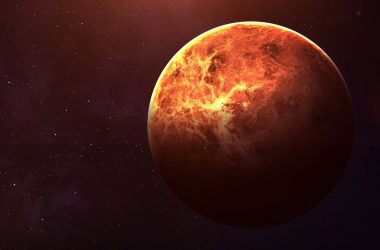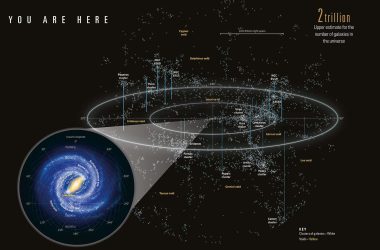NASA’s Lucy spacecraft is embarking on its first asteroid visit. On November 1st, it will fly within 430 kilometers of the small asteroid Dinkinesh, conducting instrument tests and gathering scientific observations as it passes by.
Launched in October 2021, Lucy has been traveling at a speed of about 19.4 kilometers per second towards the outer solar system. Its primary mission is to explore the Trojan asteroids, which are trapped in Jupiter’s orbit around the sun. One group of Trojans leads ahead of Jupiter, while the other trails behind.
Dinkinesh is not a Trojan asteroid; instead, it resides in the main asteroid belt between the orbits of Mars and Jupiter. This makes it an opportune stop for Lucy to ensure that all of its scientific instruments are functioning properly before observing the other nine asteroids in its main mission.
Measuring less than 1 kilometer in width, Dinkinesh is barely visible from Earth. Therefore, this flyby will provide researchers with the first-ever view of its surface. The tracking system used to keep the asteroid within the cameras’ field of vision will also be tested during the flight. Given the relatively small size of asteroids and the spacecraft’s high speed, this tracking system is vital.
“For the Trojans, we have a very good estimation of the orbit, but there is still an uncertainty of about 100 miles, and when you approach these targets you don’t want to miss them,” says Noemí Pinilla-Alonso at the University of Central Florida. “This rehearsal is going to tell the team how good the system is, and it will give them an opportunity to test everything and to improve it before the science starts.”
If the tracking system functions as expected, the scientific instruments will be used to obtain basic measurements of Dinkinesh’s surface. Although the primary aim of this flyby is testing, these instruments may still provide researchers with valuable information. Pinilla-Alonso adds, “The other asteroids of the same size that NASA has visited are near-Earth asteroids, so one thing that we want to see is whether the shape of this kind of object in the main belt is similar to the shape of objects that have been delivered to the inner solar solar system.”
After this flyby, Lucy’s next significant event is another pass by Earth in December 2024, followed by a visit to one more main belt asteroid in 2025. It will then embark on a two-year journey to Jupiter and its Trojans. The Trojans are believed to be pristine remnants from the planet formation process in the solar system, offering researchers insights into the formation and movement of planets after their creation.












